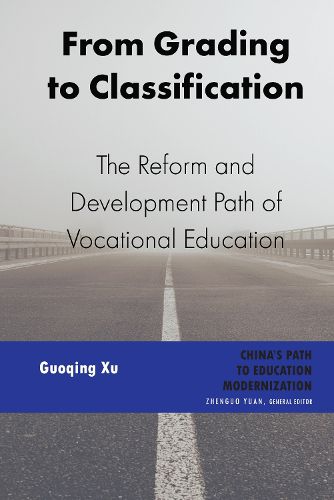Readings Newsletter
Become a Readings Member to make your shopping experience even easier.
Sign in or sign up for free!
You’re not far away from qualifying for FREE standard shipping within Australia
You’ve qualified for FREE standard shipping within Australia
The cart is loading…






This title is printed to order. This book may have been self-published. If so, we cannot guarantee the quality of the content. In the main most books will have gone through the editing process however some may not. We therefore suggest that you be aware of this before ordering this book. If in doubt check either the author or publisher’s details as we are unable to accept any returns unless they are faulty. Please contact us if you have any questions.
The tremendous economic and social changes over the past 40 years of reform and opening-up have provided a seedbed for the historic achievements in the development of vocational education in China.The development of vocational education over the past 40 years can be divided into three phases: the restoration and development phase of secondary vocational education in the 1980s, the phase of stability and consolidation in the 1990s, and the phase of strengthening the system and comprehensively deepening foundations since the 21st century. From starting everything from scratch in the 1980s to the intense hard work in the 1990s, and then to the scientific development in the 21st century, vocational education has come through a crucial historical period. It has developed more systemically and deeply than any other period in history. At present, China's vocational education has entered a new era. The main challenges faced by vocational education in the new era include: to further consolidate the status of vocational education and accomplish each connection smoothly; to establish a national institutional platform for school-enterprise cooperation; to set up a scientific assessment system in order to analyze labor demand for industrial development; to build national professional teaching standards for vocational education; to establish a standardized and systematic training system for vocational education teachers; and to enhance top-level design and advance the implementation of a modern apprenticeship system.
$9.00 standard shipping within Australia
FREE standard shipping within Australia for orders over $100.00
Express & International shipping calculated at checkout
This title is printed to order. This book may have been self-published. If so, we cannot guarantee the quality of the content. In the main most books will have gone through the editing process however some may not. We therefore suggest that you be aware of this before ordering this book. If in doubt check either the author or publisher’s details as we are unable to accept any returns unless they are faulty. Please contact us if you have any questions.
The tremendous economic and social changes over the past 40 years of reform and opening-up have provided a seedbed for the historic achievements in the development of vocational education in China.The development of vocational education over the past 40 years can be divided into three phases: the restoration and development phase of secondary vocational education in the 1980s, the phase of stability and consolidation in the 1990s, and the phase of strengthening the system and comprehensively deepening foundations since the 21st century. From starting everything from scratch in the 1980s to the intense hard work in the 1990s, and then to the scientific development in the 21st century, vocational education has come through a crucial historical period. It has developed more systemically and deeply than any other period in history. At present, China's vocational education has entered a new era. The main challenges faced by vocational education in the new era include: to further consolidate the status of vocational education and accomplish each connection smoothly; to establish a national institutional platform for school-enterprise cooperation; to set up a scientific assessment system in order to analyze labor demand for industrial development; to build national professional teaching standards for vocational education; to establish a standardized and systematic training system for vocational education teachers; and to enhance top-level design and advance the implementation of a modern apprenticeship system.